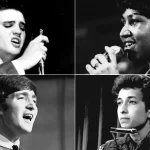
Introduction
Step back in time and embrace the nostalgia of traditional sports making a grand comeback! As modernity continues to shape our world, there’s a renewed interest in reviving the classics. Join us on this journey as we explore how traditional sports are reclaiming their spotlight in mainstream culture. Let’s dive into the revival of these timeless activities and witness their resurgence into popularity once again!
The Resurgence of Traditional Sports
Traditional sports are making a comeback, capturing the hearts of enthusiasts worldwide. From ancient games like Kabaddi to traditional martial arts such as Taekwondo, these timeless activities are experiencing a revival in modern times. The resurgence is fueled by a growing appreciation for cultural heritage and a desire to reconnect with our roots.
In an era dominated by technology and fast-paced entertainment, traditional sports offer a refreshing alternative that promotes physical activity and mental well-being. People are rediscovering the joy of playing simple yet engaging games that have been passed down through generations. This renewed interest is bridging the gap between past traditions and present-day lifestyles.
With more emphasis on health and wellness, traditional sports are becoming popular choices for individuals looking to stay active while embracing their culture. The resurgence of these classic activities not only provides physical benefits but also fosters a sense of community and pride in preserving age-old traditions.
The Impact on Mainstream Culture
Traditional sports are more than just physical activities; they carry cultural significance that resonates with people worldwide. The resurgence of these traditional games has had a profound impact on mainstream culture, sparking interest and appreciation for age-old practices. As these sports gain traction in popular culture, they bring communities together, fostering a sense of unity and pride in heritage.
Mainstream media plays a crucial role in showcasing the beauty and excitement of traditional sports to wider audiences. Through television broadcasts, online streaming platforms, and social media channels, these games are reaching new heights of popularity. This increased visibility not only rejuvenates interest but also preserves the rich history behind each sport.
By integrating traditional sports into modern settings like schools and community events, younger generations are exposed to their cultural roots while staying active and engaged. Embracing these classic pastimes allows for cross-generational bonding and promotes inclusivity within society.
Popularization Through Media Representation
The resurgence of traditional sports has been greatly aided by media representation. Television, social media, and online streaming platforms have played a significant role in bringing these classic games back into the spotlight. Through captivating documentaries, live broadcasts, and engaging storytelling, audiences are introduced to the rich history and excitement of traditional sports.
By showcasing these sports in a modern light, media outlets are able to attract new fans who may not have been exposed to them before. This exposure helps bridge the gap between generations and cultures while preserving the essence of these timeless activities. Viewers are drawn in by the skill, strategy, and competitive spirit displayed in traditional sports competitions.
As more attention is given to these once-forgotten pastimes through various forms of media, there’s a growing appreciation for their cultural significance worldwide. The power of visual storytelling continues to play a vital role in popularizing traditional sports among mainstream audiences.
Engaging the Youth: Bringing Back Traditional Games
Engaging the youth in traditional games is a refreshing trend that is gaining momentum. With a shift towards reconnecting with our roots, young people are rediscovering the joy of playing games that have been passed down through generations. These traditional activities not only provide entertainment but also promote social interaction and physical activity.
Bringing back traditional games like hopscotch, tag, or marbles can foster a sense of community among children and teenagers. In a world dominated by technology, these simple yet engaging pastimes offer a much-needed break from screens and gadgets. By reintroducing these classic games to youngsters, we are preserving cultural heritage while encouraging wholesome playtime.
From schoolyards to community centers, there’s a growing movement to incorporate traditional games into youth programs. By embracing these timeless activities, we are nurturing valuable skills such as teamwork, communication, and sportsmanship in the younger generation. Let’s continue to inspire today’s youth by reviving the classics!
Reviving Traditional Indigenous Games
Traditional Indigenous games hold a significant place in the cultural heritage of various communities worldwide. These games are not just about physical activity but also embody values, traditions, and stories passed down through generations. In recent years, there has been a growing interest in reviving these traditional sports as a way to celebrate diversity and promote inclusivity.
By bringing back Indigenous games, we are honoring the history and resilience of indigenous peoples while also creating opportunities for intercultural exchange and understanding. Organizations and communities dedicated to preserving these games play a crucial role in keeping these valuable traditions alive for future generations to appreciate and enjoy.
From Maori stick games to Inuit blanket tosses, each traditional Indigenous game offers a unique insight into the rich tapestry of cultures around the world. Reviving these ancient pastimes is more than just a recreational pursuit; it is a meaningful act of preserving cultural identity and fostering unity among diverse populations.
Methods and Research Findings
Traditional sports are making a remarkable comeback, and researchers have been delving into the methods behind this resurgence. Studies show that a key factor in reviving traditional sports lies in community engagement and cultural preservation efforts. By promoting these activities at local events and schools, interest is sparked among both the young and old.
Research findings indicate that modern technology plays a crucial role in reintroducing traditional sports to mainstream audiences. Through social media platforms, live streaming, and virtual reality experiences, these classic games are gaining traction once again. Additionally, collaborations between athletic organizations and heritage groups have proven effective in showcasing the historical significance of these sports.
Moreover, studies reveal that education initiatives focusing on the health benefits and inclusivity of traditional sports have been instrumental in their revival. By emphasizing the physical fitness aspects as well as the cultural richness embedded within these activities, more individuals are becoming interested in participating and preserving these timeless traditions.
Discussion on the Importance of Traditional Sports
Engaging in traditional sports goes beyond just physical activity; it connects individuals to their cultural heritage, fostering a sense of pride and belonging. These games often carry deep-rooted traditions and values that are passed down through generations, promoting community bonding and social cohesion.
By participating in traditional sports, individuals can develop essential life skills such as teamwork, discipline, and resilience. The intrinsic values embedded within these activities help shape individuals into well-rounded personalities with a strong sense of identity and respect for tradition.
Furthermore, the resurgence of traditional sports serves as a reminder of the rich tapestry of global sporting culture. Embracing these classic games not only preserves our history but also celebrates diversity by showcasing unique practices from different parts of the world.
Conclusion and Future Outlook
In today’s fast-paced world, the revival of traditional sports is not just a nostalgic throwback but a vital connection to our roots. As these classic games make their way back into the spotlight, they bring with them a sense of community, heritage, and identity that is irreplaceable. The future outlook for traditional sports looks promising as more people recognize the value in preserving these time-honored activities.
By embracing our past and celebrating our cultural diversity through traditional sports, we pave the way for a richer and more inclusive society. Let us continue to support and participate in these timeless games so that they may thrive for generations to come. Together, we can ensure that the classics remain an integral part of mainstream culture, bridging gaps between generations and fostering unity through shared experiences on the field of play.

